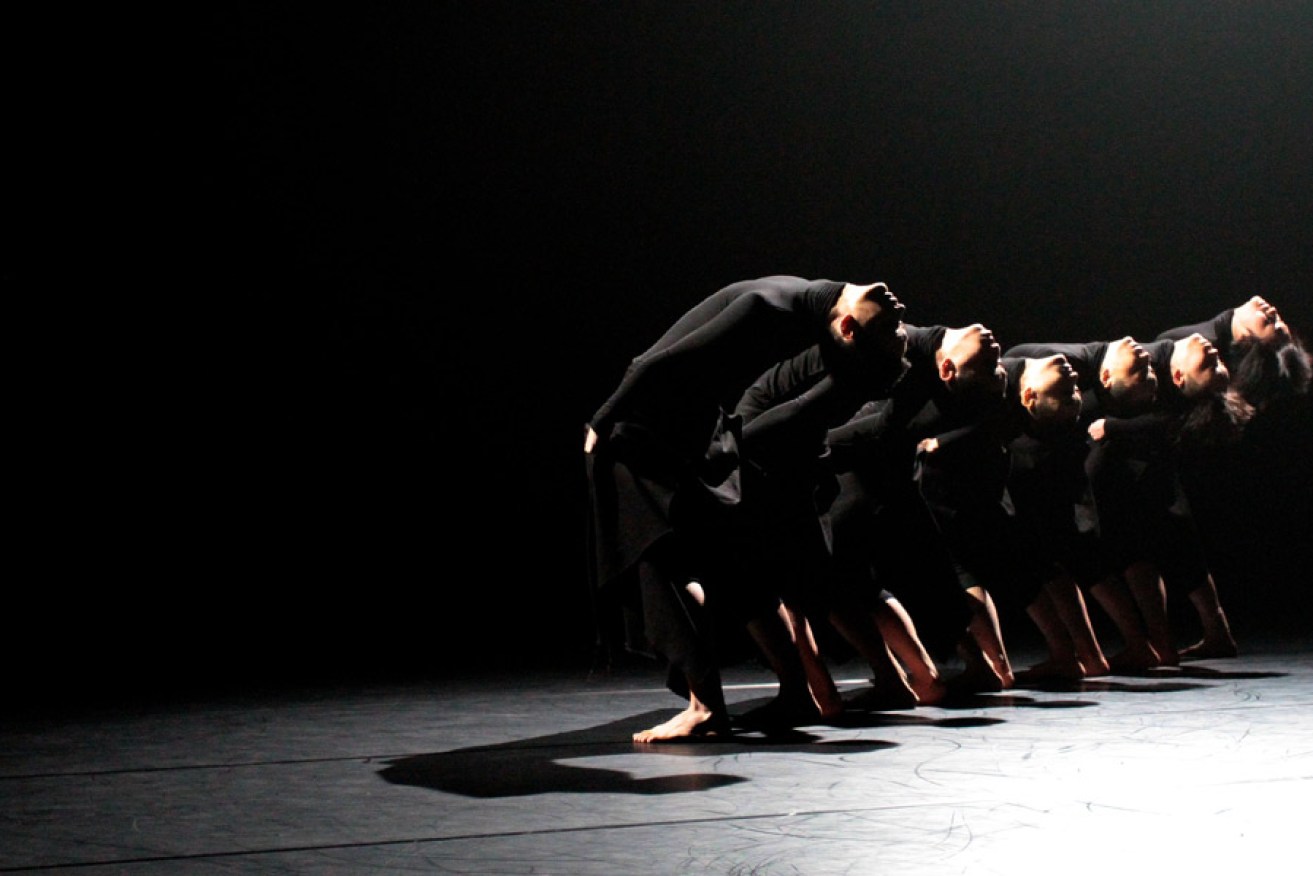The OzAsia Festival has surprised and delighted audiences with the variety of performance styles on offer, the skill of the performing artists, and the ingenuity and artistry of the creative teams behind the productions.
Tao Dance Theatre, a leading Beijing contemporary dance company, has created, in 6 and 7, two dance performances that are unusual in the world of dance. Company founder and artistic director Tao Ye says he wants his audiences to recognise that he resists the “rampant consumerism that characterises our time” and has a belief that “the more you want to get or take away from something, the further you are from that pursuit”.
It is true that when we see a performing arts production, we want value for money, excitement and a lasting experience. Tao Dance creates a genuinely minimalist performance; 6 or 7 dancers wearing identical costumes and dancing in unison for the entire performance, which genuinely provides an opportunity for each audience member to take from it something entirely personal.
In 6, the stage is dark and a musical note is sustained on something like a cello but it evolves into an electronic buzz. Dimly lit, upstage are six dancers in black outfits with their backs to us; we can vaguely make out their shapes through the haze. And so begins each individual’s journey to wonder who they are, who they represent and what it all means – or to simply enjoy the experience of seeing six talented dancers work as one for 30 minutes.
The movements are repeated with subtle variations; twisting to the right, looking left, bending forward, rolling to the side, arching the back. Occasionally the six lean back and we see fleeting glimpses of their faces, or the light may catch their hands and, as they gradually make their way downstage, we see their calves more brightly. They seem to be joined at the hip. Are they one 12-legged creature? A family? A community?
Because they are so synchronised and we, like them, are so captivated by the repetition and the rhythm of the piece, when they do suddenly go down on their knees only to quickly return to standing, we are astonished. We wonder whether what we saw really took place and we long for it to happen again. The dancers’ faces remain neutral, expressionless, and so the usual signs of interpreting emotion and narrative are not available to us. It doesn’t matter, though, because Tao dance is different from the normal dance experience.
The six kneel and there is a welcome silence. After a brief pause, they rise in slow motion and begin again, this time using more of the diagonal and stepping more vigorously; although the lighting catches individual dancers, they remain as one. Interpretations don’t matter much, as there is clearly no correct meaning; at one stage they reminded me of a Victorian funeral procession, at another a tribal dance ceremony and even production line workers, but then, perhaps I shouldn’t have been looking for literal interpretation.
7 is a world premiere and the performance begins with a special request that the audience be as quiet as possible, because all sound affects the performance. This time the stage is flooded with white light and the dancers wear long white stretch fabric, with their feet apart. The initial effect is startling, as our eyes have adjusted to the darkness.
7 begins with silence and the dancers repeat very similar movements to the ones in 6, but the effect is hypnotic. A soft sound is heard, like a buzzing of bees, and the movement appears insect-like in its formation and precision. The white material of the dancers becomes intriguing, and the folds and patterns they make are beautiful and fascinating. The humming evolves into more recognisable human sounds and, as the dancers near the front, it is difficult to determine whether they are making the sounds, accompanying the sounds or not making sound. It is another effective illusion created again by the dancers’ mesmeric skills.
6 and 7 were a very different dance experience for me. I was absorbed by the company’s ability to establish and maintain the intensity of the piece, and even the curtain call was a work of art as they bowed gracefully and together.
The 2014 OzAsia Festival has provided many highlights and we are fortunate that some of the best artists in their field have been able to join us. I am very impressed with the coordination of the technicians from overseas and in Adelaide, who must work together incredibly efficiently to allow companies to bump in for a one, two or three-night season with complicated lighting rigs and cues. Well done to everyone involved in the logistics of making this event happen.
It is a festival that celebrates cultural diversity, increases communication between cultures and enhances the human spirit.
The 2014 OzAsia Festival officially finished at the weekend, although composer and conductor Tan Dun’s Nu Shu: The Secret Songs of Women will be performed with the Adelaide Symphony Orchestra on Saturday under the festival banner.
More OzAsia coverage
Film review: Faith Connections
Review: Ibsen in One Take
Review: Hiroko Watanabe and Above the Clouds
Review: Synergy Percussion Meets Noreum Machi
Film review: Why Don’t You Play in Hell
Review: Yasukichi Murakami – Through a Distant Lens
Review: Dream of a Ghost Story
What Australia could learn from Confucianism
Review: Red Sorghum
Secret script inspires Tan Dun symphony
Chinese director pushes boundaries (Ibsen in One Take)
OzAsia shines spotlight on Shandong (festival highlights)





